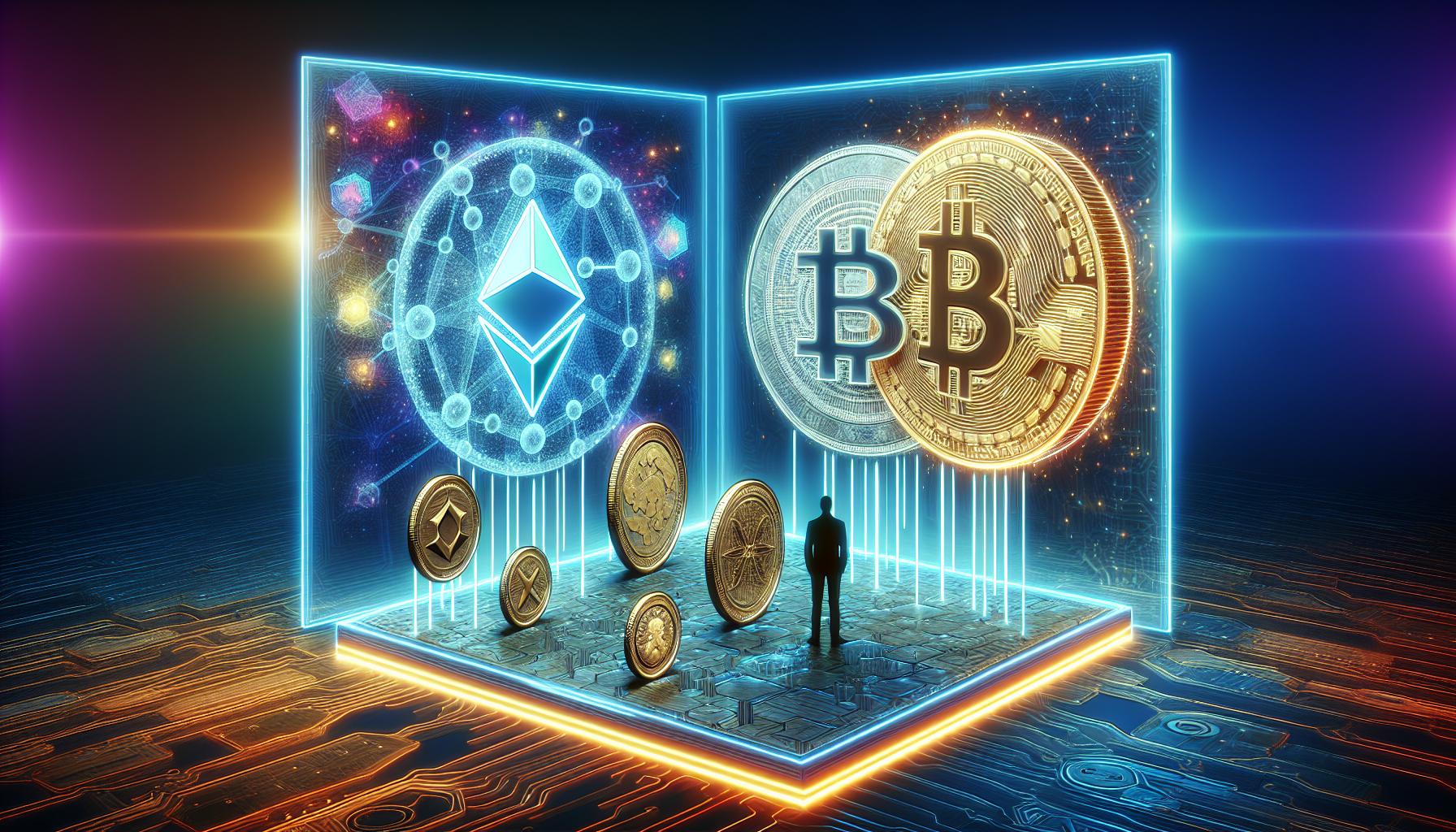Introduction
NFT and cryptocurrency are two emerging digital assets currently disrupting many industries. With the first showing signs of revolutionizing ownership and the other threatening to replace traditional currencies, we can’t help but wonder if NFTs will ever be as versatile as crypto. Presenting a holistic response to this question, we examine both sides by highlighting some core applications of both crypto and NFT so far. To predict which will have the most applications in the future, we pit them against each other based on some core criteria for versatility, and our discovery was far from what we imagined. Read on to find out.
How Versatile Have Cryptocurrencies Been So Far?
Cryptocurrencies have been closely related to finance since they became mainstream. There have been multiple hints that they might replace fiat currencies. However, their evolution has made notable ones like bitcoin usable in many online niches, from gambling to cross-border remittances and even everyday e-commerce payments. Here are some use cases of crypto so far.
Finance: Transactions, Purchases and Payments
Crypto’s primary use case is finance. It is a currency, after all. Bitcoin, the first crypto, was created in 2009 to provide a legitimate peer-to-peer electronic cash system that wouldn’t rely on banks to prevent the reoccurrence of the great financial crisis of 2008. Its peer-to-peer nature has made it faster and cheaper than existing financial systems. As such, it has been widely used for remittances and non-commercial money transfers. Following the development of decentralized finance (DeFi) platforms, crypto has also leveraged smart contracts for lending purposes. In addition, these DeFi exchanges have accounted for 60% of all crypto transactions through retail activities, especially e-commerce. So far, crypto has proven to be a versatile asset for modern-day finance and can now be used to purchase many types of goods and services.
Governance
Thus far, crypto has been applied in overseeing and controlling the direction of organizations. We may see it in action in government in the coming years. Many organizations can now create and sell tokens to their members to set up a digital organization. The Decentralized Autonomous Organization (DAO) venture fund, launched via the 2016 initial coin offering (ICO), is a classic example of this application. Crypto facilitated a flat organizational structure in this venture, as token holders became stakeholders and voted on projects via the Ethereum blockchain’s smart contracts. These applications imply that crypto could be used in future elections. Members or citizens would be issued unique voting tokens, and publicly accessible voting systems would tally votes.
Utilities
Some cryptocurrencies have specific real-world uses. They are not considered financial instruments to be traded. Instead, individuals purchase them in exchange for other cryptocurrencies like Bitcoin and Ethereum to access certain products or services on a platform. For instance, Ethereum’s gas token is used to pay gas fees on the Ethereum blockchain network. Ethereum also possesses the Ether cryptocurrency, which helps those who stake their tokens earn more ether.
Gaming
Cryptocurrency plays a major role in the gaming industry’s evolution. It infuses the reality of real-world economics into gaming. This application is an extension of crypto’s application as utilities because these games allow players to earn in-game crypto tokens for completing gaming tasks or outperforming other gamers. Players can then trade their in-game tokens for crypto or fiat currencies. The development of P2E (play-to-earn) gaming models facilitates this application, as many individuals are now getting paid for being full-time gamers. Likewise, crypto coins can be used to stake on casino games online, much the same way as fiat currencies can. This development brings gambling to places where it has previously been restricted, as crypto regulations are different from fiat.
Investments
As an extension of its primary use case, crypto also serves as an investment. In recent times, traditional investment instruments like bonds and stocks have been replicated in the cryptocurrency industries as security tokens — sister forms of utility tokens, if you wish. Security tokens signify ownership stakes or interests in a company. We saw many of these during the initial coin offering boom of 2017. The crux of their application as investment forms lies in the possibilities of increasing value over time. As a common example, Bitcoin – even though it wasn’t intended to be a security token— has increased in value compared to when it was first launched. As such, investors have acquired and preserved it as an investment form. Many proponents also believe crypto can hedge against inflation, further substantiating its investment applications.
How Versatile Can NFTs Ever Be?
Contrary to common opinion, NFTs have applications beyond digital art and minted memes. Their non-fungibility represents huge potential that can be seen in the following use cases.
Art
NFTs have imparted art significantly. Yet, multiple possibilities can be explored. They connect budding and established artists to new and untapped audiences. As a result, art doesn’t have to be exclusive to the crème de la crème in high-end museums because artists who know how to sell NFT art can sell it across borders to the highest bidders. Reputable museums like the British Museum have embraced this possibility by creating digital forms of their most precious pieces through tokenization with the help of blockchain technology. This step has huge potential benefits in ensuring the authenticity of artworks and protecting the ownership of digital art.
Gaming
Like utility tokens, gaming developers can create in-game NFTs that can be sold, traded, and bought for completing gaming tasks and outperforming other gamers. Similarly, they provide better earning opportunities for gamers, as the NFTs could appreciate based on perceived value and increased demand. Blockchain technology’s smart contracts facilitate this value transfer and appreciation. NFTs facilitate true ownership of in-game tokens, as gaming is touted to become one of the best ways of gaining NFTs in 2024. As a result, the lines between investment and gaming may blur in the future because NFT’s earning potential in gaming is attracting both traditional gamers and investors in the industry.
Collectibles and Memorabilia
NFTs have recently begun to show serious potential as the future of collecting unique digital items. While digital art pieces are common examples of collectibles, they are not the only forms. Collectibles can be anything of sentimental value to any individual. You might stumble across a desired collectible once in a lifetime. But with NFTs, you can secure these unique items and claim verifiable ownership that guarantees huge future profits. For instance, former US President Donald Trump’s income statement shows huge profits from his collection.
Real Estate
NFTs can also be used to represent property ownership. Property deeds can now be tokenized as NFTs for easy purchases on NFT marketplaces. Individuals who cannot purchase these properties outright can purchase fractions to gain fractional or shared ownership with other shareholders. By so doing, the costs associated with property sales can be reduced due to the elimination of intermediaries like lawyers and real estate agents. Smart contracts will be used to implement these purchases and ownership transfers. NFT real estate eliminates traditional property taxes while retaining the potential for capital gains because real estate always appreciates. And, of course, it solves the accessibility problem by allowing cross-border trading.
A Side-by-Side Comparison of Crypto and NFT Versatility
The following represents areas where crypto and NFTs have wide applications.
Trading and Finance
Both NFTs and cryptocurrencies can be traded. However, while trading NFTs involves exchanging the NFT for a set value of fiat or cryptocurrency, trading crypto deals with the coin’s underlying value. This difference stems from the unique nature of both. NFTs are naturally non-fungible, implying that one unique entity cannot be exchanged with another form. On the other hand, cryptocurrencies are fungible and can be replaced with another entity of equal value. This reality implies that crypto can have wider finance applications than NFTs. Besides, NFT sales and purchases are powered by cryptocurrencies.
Investments
Once again, both crypto and NFTs have huge investment potential. In gaming, many investors fund NFT games based on the speculative capital gains the P2E model presents. The same can be said for cryptocurrencies because many platforms have now introduced in-game security tokens. However, crypto might edge out NFTs regarding investment potential because their value depends on market forces of supply and demand, technological advancements, regulatory changes, etc. Crypto has shaped up
Analyst comment
Neutral news.
As an analyst, the market for both crypto and NFTs will continue to grow and evolve. Crypto has established itself as a versatile asset for finance and investments, while NFTs have potential in areas such as art, gaming, collectibles, and real estate. Both have wide applications in different ways, and their versatility will depend on future technological advancements and market developments. The market for both crypto and NFTs is expected to continue expanding, but the extent to which they will be adopted and integrated into various industries will depend on factors such as regulatory changes, demand, and technological advancements. Only time will tell how versatile NFTs can become.













